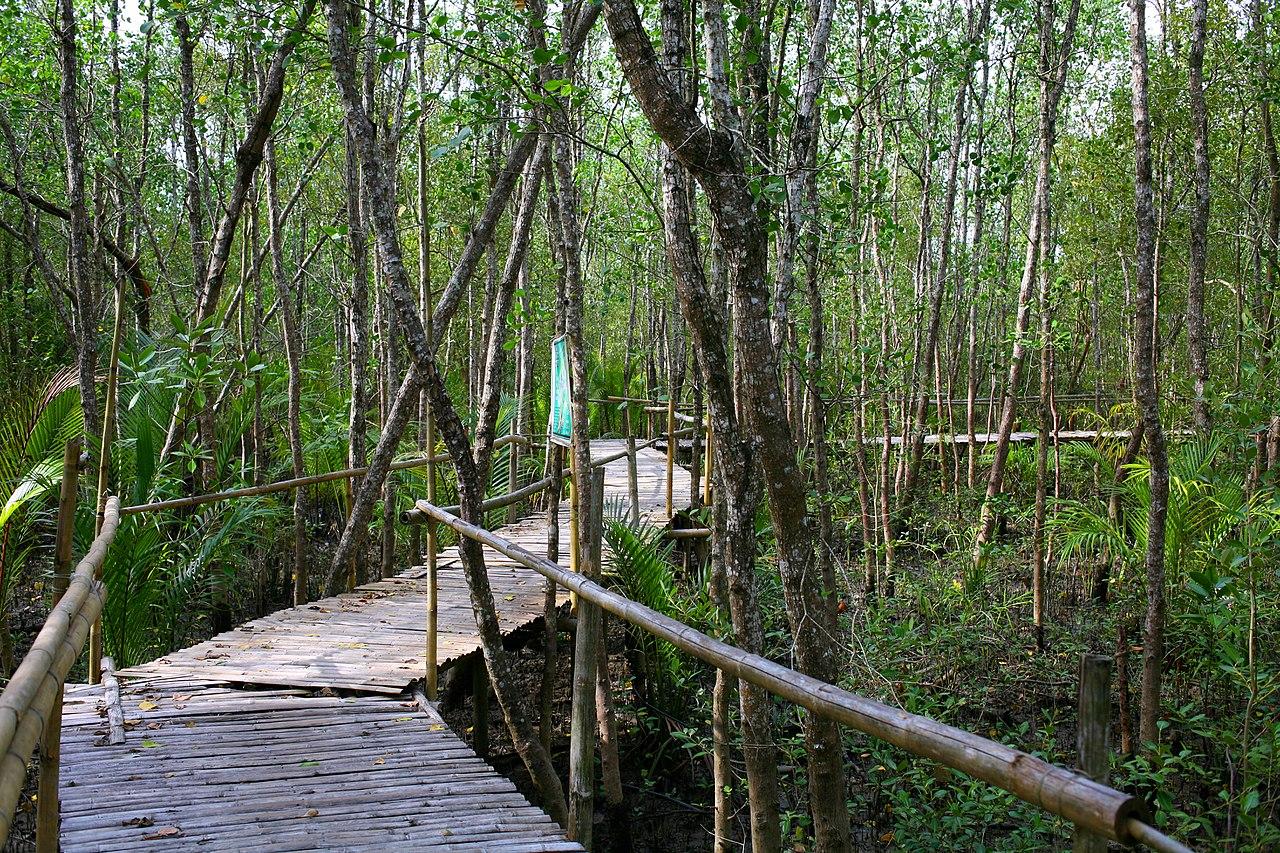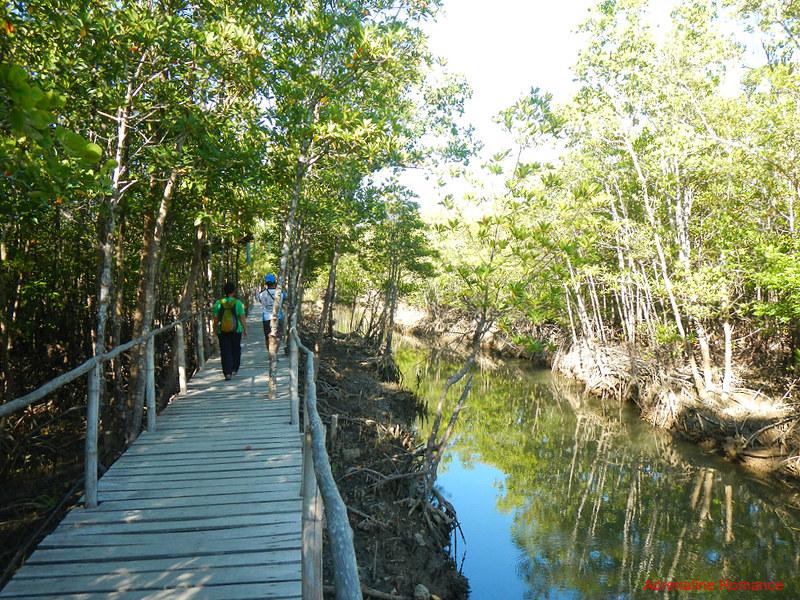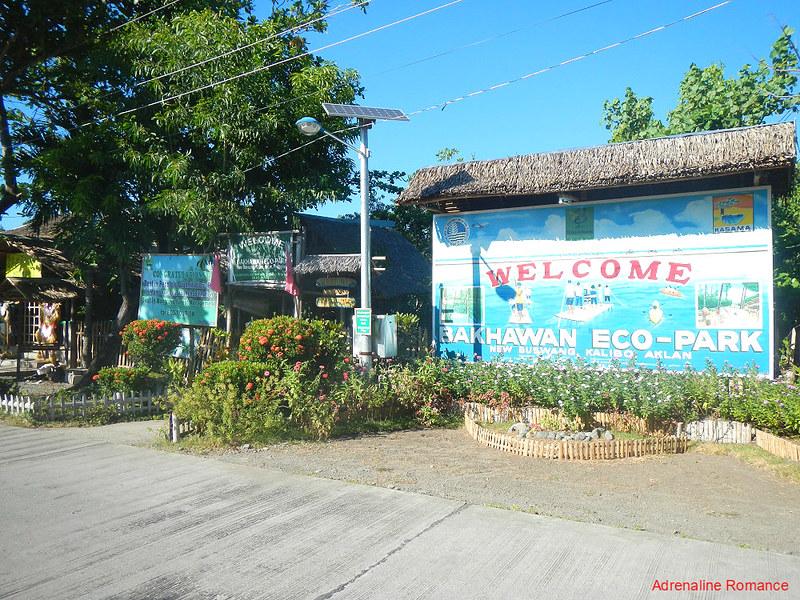The Bakhawan Eco-Park is a 220-hectare mangrove forest located in Kalibo, Aklan province, Philippines, that started as a reforestation project in 1990. It was a joint project of the local government and a non-government organization, Kalibo Save the Mangroves Association (KASAMA), with the aim of reforesting the muddy shoreline of New Buswang district to protect the community from floods and storm surges [1,2]. Aside from preventing floods, the eco-park also provides locals with livelihood opportunities, mitigates the effects of climate change, and serves as a habitat for various mangrove tree species, birds, and marine life [1,2]. The project's success is largely attributed to the active involvement and support of the local community, with some families playing an integral role in the reforestation program. [2] Notably, the involvement of local women in the NBS initiative has contributed to the success of mangrove conservation. Some women have also taken on the task of policing the mangroves to prevent illegal tree-cutting by trespassers [4]. Today, the eco-park is acknowledged as one of the most successful mangrove reforestation project in the Philippines [1]
Overview
Nature-based solution
- Blue infrastructure
- Coastlines
- Coastal wetland, mangroves and salt marshes
- Parks and urban forests
- Large urban parks or forests
Key challenges
- Climate action for adaptation, resilience and mitigation (SDG 13)
- Climate change adaptation
- Coastal resilience and marine protection (SDG 14)
- Coastal protection / hazard mitigation
- Marine and coastal biodiversity protection
- Marine and coastal research and/or education
- Green space, habitats and biodiversity (SDG 15)
- Habitat and biodiversity restoration
- Green space creation and/or management
- Water management (SDG 6)
- Flood protection
- Stormwater and rainfall management and storage
- Economic development and employment (SDG 8)
- Tourism support
- Employment/job creation
Focus
Project objectives
Implementation activities
Climate-focused activities
Climate change adaptation:
- Restore wetlands and/or coastal ecosystems to dissipate the effects of flooding and/or storms
Biodiversity conservation or restoration-focused activities
Biodiversity restoration:
- Rehabilitate and restore damaged or destroyed ecosystems
- Restore species (native, endangered, or unspecified)
- Restore native species
- Restore valued species
Main beneficiaries
- Local government/Municipality
- Citizens or community groups
Governance
Management set-up
- Co-governance with government and non-government actors
Type of initiating organisation
- National government
- Regional government
- Local government/municipality
- Non-government organisation/civil society
Participatory approaches/ community involvement
- Joint implementation (e.g. tree planting)
Details on the roles of the organisations involved in the project
Project implemented in response to ...
Financing
Total cost
Source(s) of funding
- Public national budget
- Funds provided by non-governmental organization (NGO)
- Private funding by citizens
Type of funding
- Direct funding (grants, subsidies, or self-financed projects by private entities)
- Loan
- Membership or entrance fees
Non-financial contribution
Impacts and Monitoring
Environmental impacts
- Climate change
- Strengthened capacity to address climate hazards/natural disasters
- Environmental quality
- Improved soil quality
- Water management and blue areas
- Increased protection against flooding
- Improved stormwater management
- Enhanced protection and restoration of coastal and marine ecosystems
- Green space and habitat
- Increased green space area
- Increased conservation or restoration of ecosystems
- Increased conversion of degraded land or soil
- Increased number of species present
Economic impacts
- More sustainable tourism
- Reduce financial cost for urban management
- Increase in agricultural production (for profit or not)
- Generation of income from NBS
Socio-cultural impacts
- Social justice and cohesion
- Improved liveability
- Increased visibility and opportunity for marginalised groups or indigenous peoples
- Increased involvement of locals in the management of green spaces
- Increased access to healthy/affordable food
- Health and wellbeing
- Gain in activities for recreation and exercise
- Education
- Increased support for education and scientific research
- Safety
- Improved community safety to climate-related hazards
Type of reported impacts
Presence of formal monitoring system
Presence of indicators used in reporting
Presence of monitoring/ evaluation reports
Availability of a web-based monitoring tool
References
[2] Aguirre, J. (2020). A Philippine community sees life-saving payoffs from restoring its mangroves. [online] Mongabay Environmental News. Available at: Source link [Accessed 15 Feb. 2023].
[3] Garcia, L. (2014). Bakhawan Eco-Park: Philippines’ most successful mangrove reforestation project. [online] WHATCHAMACALLIT. Available at: Source link [Accessed 15 Feb. 2023].
[4] Aguirre, J. (2021). In the Philippines, Women are Fierce Protectors of Mangrove Forests. [online] Earth Journalism Network. Available at: Source link [Accessed 20 Feb. 2023].
[5] Gian and Sheila (2016). Bakhawan Eco Park: Knowing the Protector of the Shores. [online] Adrenaline Romance. Available at: Source link [Accessed 20 Feb. 2023].
[6] Sama Sama Decoverte (n.d) KASAMA- Mangrove forest. Available: Source link



